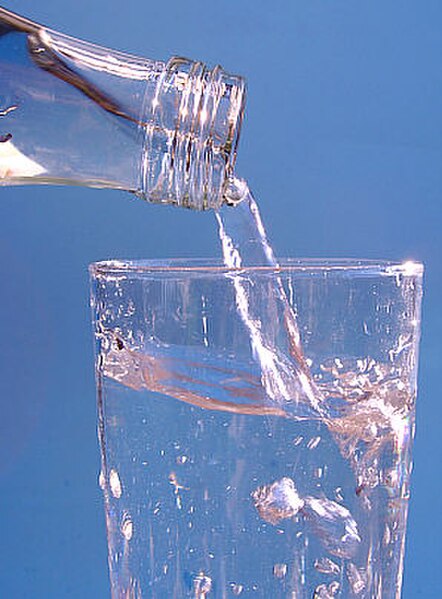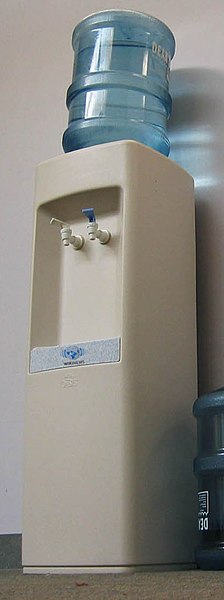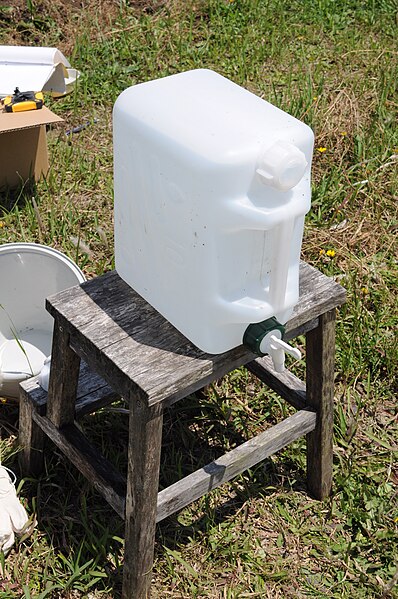Nile red is a lipophilic stain. Nile red stains intracellular lipid droplets yellow. In most polar solvents, Nile red will not fluoresce; however, when in a lipid-rich environment, it can be intensely fluorescent, with varying colors from deep red to strong yellow-gold emission. The dye is highly solvatochromic and its emission and excitation wavelength both shift depending on solvent polarity and in polar media will hardly fluoresce at all.
Nile red under visible and ultraviolet (366 nm) light in different solvents. From left to right: 1. water, 2. methanol, 3. ethanol, 4. acetonitrile, 5. dimethylformamide, 6. acetone, 7. ethyl acetate, 8. dichloromethane, 9. n-hexane, 10. methyl-tert-butylether, 11. cyclohexane, 12. toluene.
Bacillus subtilis stained with Nile red as a membrane dye (shown in red). This strain grows partly as cell chains, so a membrane dye may be useful to distinguish internal cell boundaries.
Bottled water is drinking water packaged in plastic or glass water bottles. Bottled water may be carbonated or not. Sizes range from small single serving bottles to large carboys for water coolers.
Bottled mineral water being poured into a glass
Bottled water dispensed in a water cooler
A portable water container with a tap on bottom
Bottled water






